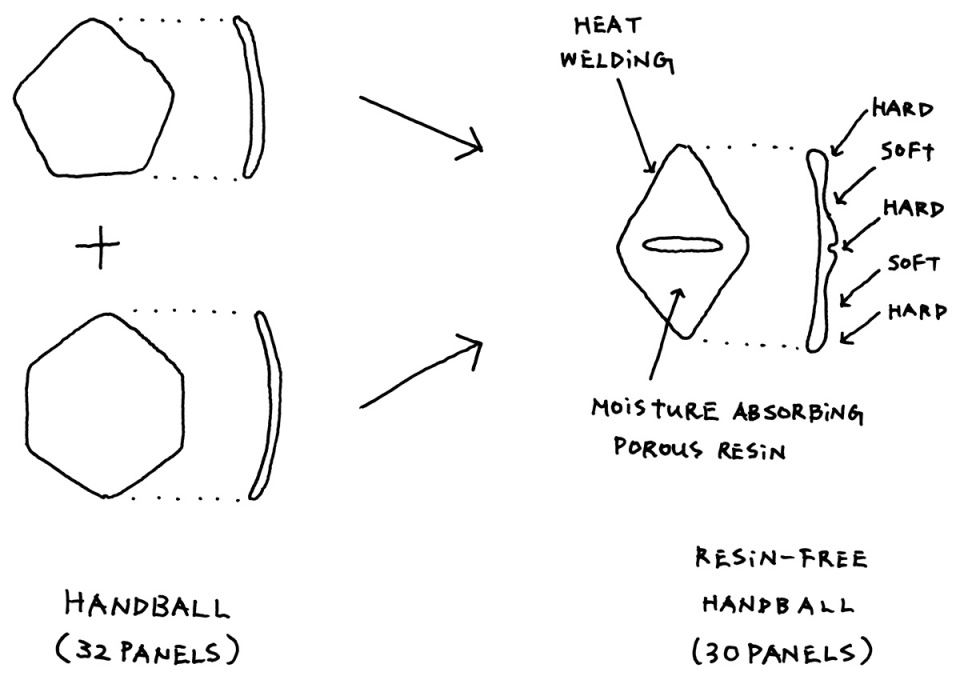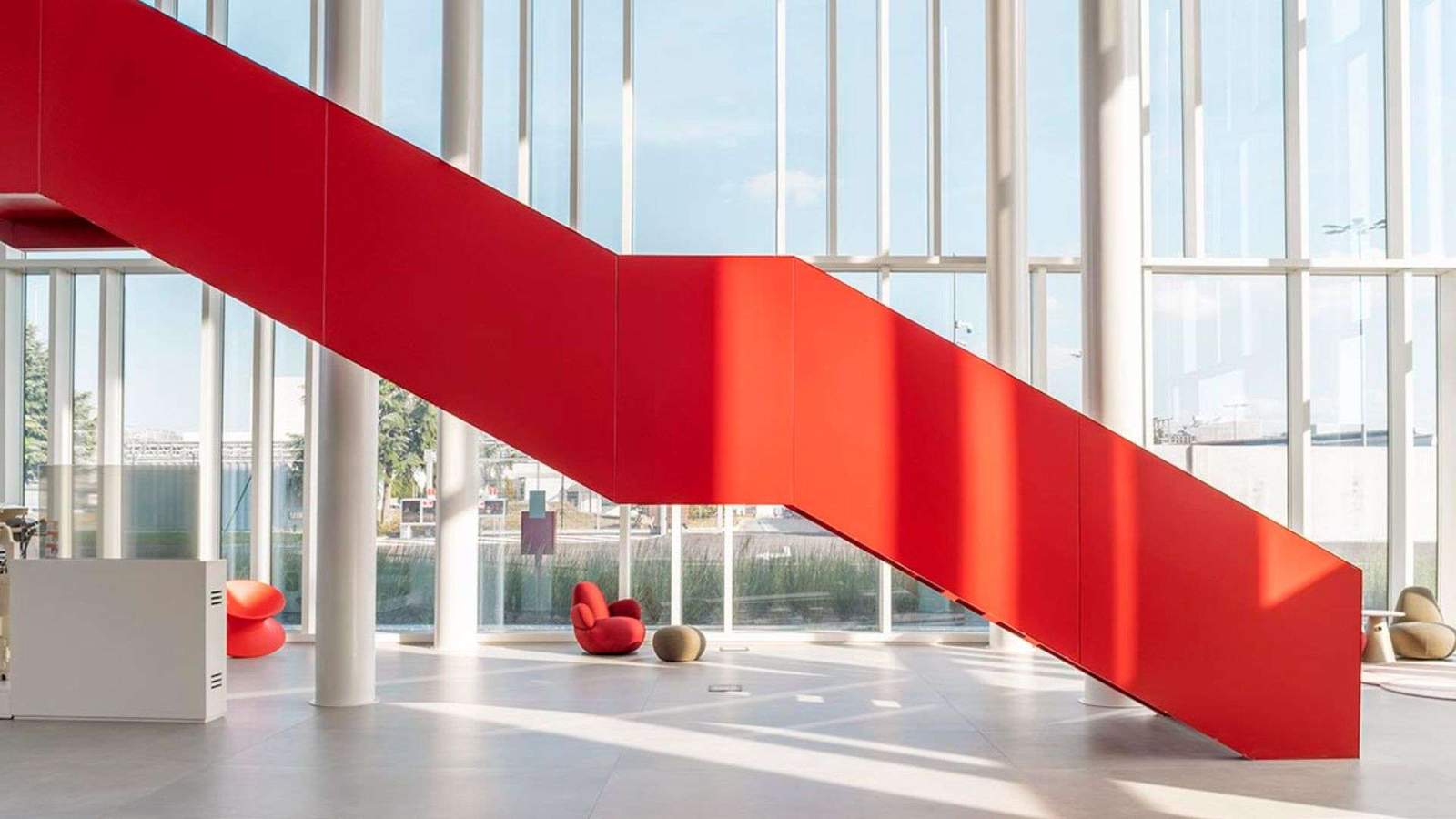d60 handball by nendo
d60 handball by nendo
A ball with a good grip without using resin
The D60 is the official match ball of the International Handball Federation (IHF) and aims to further develop the sport of handball.
An official game ball for the International Handball Federation (IHF) designed for further development of the sport.
▼ d60 handball outside view, d60 handball © Akihiro Yoshida
In order to meet the variety of rotational passing and shooting in handball, handballs are usually made of a highly viscous “resin” material to ensure a firm grip on the ball. The downside of this resin, however, is that it can contaminate gym floors and sometimes cause player injuries. To avoid this problem, the IHF requested the development of a resin-free ball that was easy to grip.
To perform the various types of spinning passes and shoots in handball, high adhesive “resin” is often used to ensure a firm grip of the ball. However, this resin stains the gymnasium floor and causes injuries at times, which requires countermeasures. To resolve these issues and further increase the number of players, the development of “a ball with a good grip without using resin” started based on the request from IHF.
▼A ball with a good grip without using resin, “A ball with a good grip without using resin” © Akihiro Yoshida
▼ Detailed view © Akihiro Yoshida
Designers researched surface textures that improve grip, such as tire treads and gecko feet, and took inspiration from the “diamond embossing” commonly found in machine switches and mechanical handles, eventually developing a 60 Panel structure composed of triangular units. The raised portion where the panel meets is stiffer than the center of the panel, helping to grip uneven surfaces more easily.
▼Design manuscript, Sketch © nendo

After the research on surface textures that enhance adsorption power such as “tread patterns on tires” and “gecko feet,” a panel structure consisting of 60 triangles was adopted, inspired by “diamond knurling,” typically used on switches of machines and grips of mechanic tools. The swelling parts of joints between panels are designed to be harder than the center of the panel, realizing an easy grip with the uneven surface.
▼A panel structure consisting of 60 triangles © Akihiro Yoshida
▼ Detailed view © Akihiro Yoshida
Unlike the existing pentagonal and hexagonal panels, this new triangular panel provides a more balanced grip. In addition, hand-stitched traditional panels were replaced with assembled adhesive panels, making the manufacturing process more stable and precise.
The new design offers a balanced grip by unifying the panel shape in triangles, in contrast to the existing pattern consisting of pentagons and hexagons. In addition, the panel joints, which were conventionally hand-sewn, changed to an assembly of adhered panels, consequently allowing for the stable manufacturing with higher accuracy.
▼Comparison of triangle panel and hexagon panel, hexagon pattern VS triangle pattern © Akihiro Yoshida

▼ Detailed comparison © Akihiro Yoshida


Surface materials considered include various types of rubber, resins and gels, culminating in a special synthetic resin whose porous skin absorbs sweat from the palm of the hand. At the same time, due to less stickiness and unique moist touch, the surface of the ball can be kept clean all the time.
Numerous surface materials were considered including different types of rubber, resins, and gels, before a synthetic resin with adhesive characteristics was finally adopted, for it absorbs sweat on the palms from its porous surface. The surface is maintained clean, since it has less stickiness, with a unique moist texture.
▼Special synthetic resin surface, Synthetic resin surface © Akihiro Yoshida

With a thoughtful development process, the goal of the design is to make handball a safer, fairer and more open sport for all, including children.
With the development of this new ball born from careful consideration, it is our aim that handball will become a safer, fair, and more open sport to everyone including children.
▼The other 6 versions, The other 6 versions © Akihiro Yoshida

Client: Molten
Collaborator: Naoko NishizumiYukiko Tomotsune
Photographer: Akihiro Yoshida











